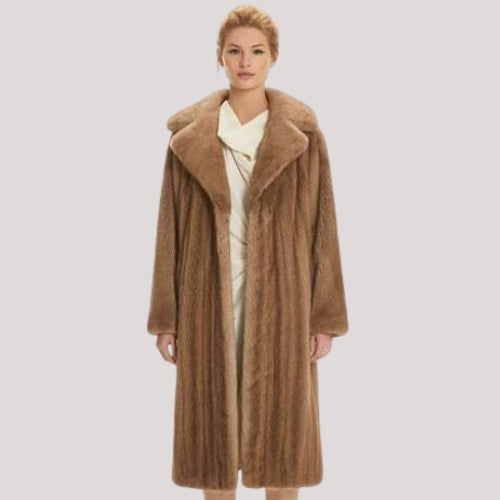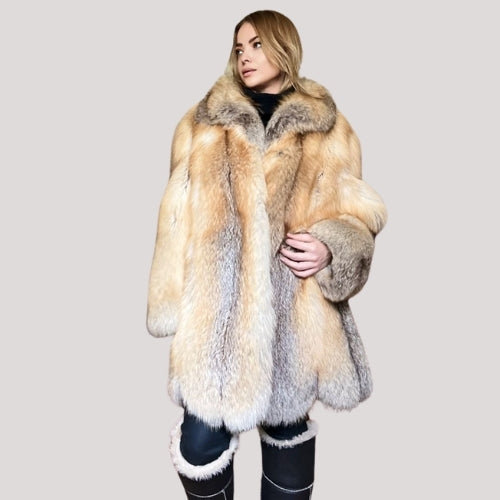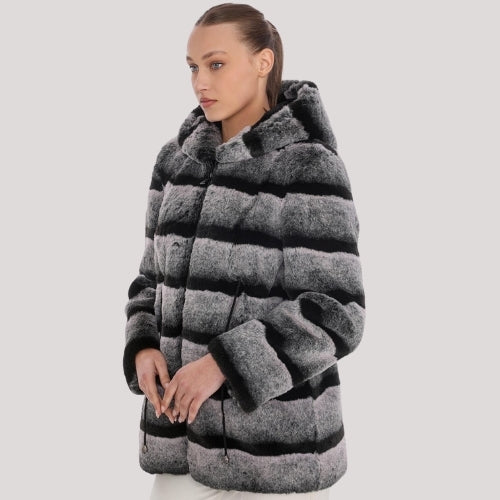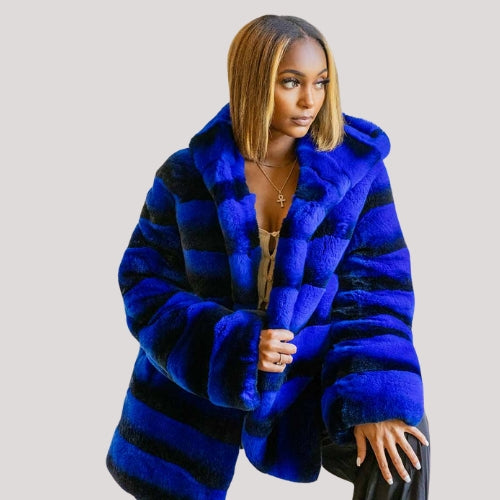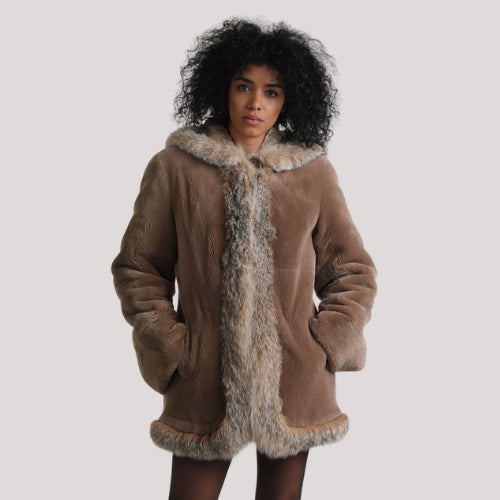
Different Types of Fur Coats
Fur coats have been part of human life for centuries now. Yes, and that’s because they offer warmth and also show status, style, and personality. These furs are available in many kinds, and it can be easy to feel lost in the fancy world of fur coats.
Have you ever wondered how many types of real fur coats there are or how to tell one from another? If so, you won’t be any longer.
Many people find it tricky to recognize the different types of fur coats because each has its own special features. From the shiny softness of the mink to the cozy feel of sheepskin, fur coats come in various textures and colors to tell their own story.
But why is it necessary? Well, knowing how to identify these different types of fur coats will not only increase your appreciation but https://www.nycjackets.com/how-should-a-bomber-jacket-fit/also help you make smarter fashion choices in the future.
Fur fashionista or planning to buy one, we’ll help you understand fur better and give you a clearer view of this luxurious material you see from runways to streets.
Get ready to dive into the lavish world of mink, fox, chinchilla, rabbit, and more!
Different Types of Fur Coats: How to Identify Them
Understanding Fur Coats
Fur coats have been a staple in fashion for centuries, providing warmth, style, and luxury to those who wear them. With various types of fur coats available, it’s essential to understand the characteristics, benefits, and maintenance requirements of each type. From the luxurious feel of chinchilla fur to the durability of beaver fur, each type of fur coat has its unique features and advantages.
Chinchilla fur, for instance, is renowned for its incredibly soft and dense texture, making it one of the most luxurious types of fur available. On the other hand, beaver fur is celebrated for its water-resistant properties and rugged durability, making it an excellent choice for those seeking a practical yet stylish fur coat. By understanding these differences, you can make an informed decision when selecting the perfect fur coat to suit your needs and preferences.
Important Characteristics
Spotting different types of fur garments can be exhausting and feel like solving a luxury puzzle. The key here is to understand the variety and qualities of different types of fur used in clothing, such as the affordability and popularity of rabbit and mink in vintage styles, and the luxurious options like sable and chinchilla.
Below are some key aspects to help you recognize them:
Texture and Feel
When it comes to outerwear, it's not just about how it looks but also how it feels. The same goes for the definition of fur coat.
Pay attention to the texture when you touch a fur coat. Is it soft and silky, or rough and thick? Your touching sense can guide you to the type of fur.

Color and Pattern
Fur coats come in many colors, from bright whites and creams to rich browns and blacks. Some have uniform patterns, while others have special ones.
The gray fox, known for its distinctive pelts with unique coloration, holds significant importance within the fur industry.
Having the idea of typical colors for each kind can help you narrow it down.

Guard Hairs vs. Underfur
Fur coats are mainly divided into two main parts: guard hairs and underfur. Guard hairs are the longer, shinier strands that make the fur look nice, while underfur is shorter and keeps you warm.
Understanding these parts can guide you in identifying fur.

Weight and Structure
Yes, that’s right! The weight of a fur coat can also give clues about its type. Heavier furs, like a beaver, feel thick and weighty, while lighter furs, like mink, are delicate.
This weight can also show how the coat is made, like is the coat from whole pelts or pieced together. Long-haired fur, particularly from animals like coyotes and raccoons, was historically popular in the 1920s and 1930s for luxurious coats due to its durability and aesthetic appeal.

Common Elements
Every type of fur has specific features, such as different densities, lengths, and sheens. Getting to know about these will improve your ability to distinguish fur coats.
Identifying Fur Coats
Identifying fur coats can be a challenging task, especially for those who are new to the world of fur fashion. However, with a few simple steps, you can determine the type of fur coat you have or are interested in purchasing.
Visual Inspection
A visual inspection is the first step in identifying a fur coat. Look for the following characteristics:
- Color: Different types of fur coats have distinct colors. For example, chinchilla fur is known for its soft gray color, while fox fur can range from red to silver. Mink fur coats often come in shades of dark brown, black, and even white.
- Texture: The texture of the fur can also help identify the type of fur coat. For example, mink fur is known for its soft and silky texture, while beaver fur is denser and more rugged. Fox fur, on the other hand, is long and fluffy, adding a dramatic flair to any outfit.
- Length: The length of the fur can also be an indicator of the type of fur coat. For example, fox fur can be long and flowing, while rabbit fur is typically shorter. Chinchilla fur is usually short and velvety, adding to its luxurious appeal.
Fur Coat Labels and Tags
Fur coat labels and tags can also provide valuable information about the type of fur coat. Look for labels that indicate the type of fur, the country of origin, and the manufacturer. Some common labels include:
- “Mink fur coat” or “Fox fur coat” to indicate the type of fur.
- “Made in USA” or “Made in Canada” to indicate the country of origin.
- “Real Fur Coat” or "RFS" to indicate the manufacturer.
These labels can help you verify the authenticity and quality of the fur coat, ensuring you make a well-informed purchase.
Most Common Types of Fur Coats
Now, it’s about time we walk you through the most common types of fur coats and what makes them special. First up, we have:
Mink fur
Surprise, surprise! Mink is often seen as the top choice in the fur world. Having short, shiny, and flat fur makes it adored by many.
Mink fur can come in various colors, including hues of brown and even white or silver-blue. It’s very soft and super warm because it's lightweight
To spot mink, look for a dense underfur with shiny guard hairs.

Fox fur
Fox fur coats are known for their popularity, softness, and versatility in the fur fashion industry. They come in unique colors such as silver fox, red fox, and blue fox.
Silver fox fur is darker and dramatic while red fox fur is bright and silky. When you’re on a hunt for fox fur, check the length of the hairs and the overall fluffiness.

Chinchilla fur
Chinchilla fur is known to be one of the most luxurious and expensive choices. It’s amazingly soft and thick and usually in gray with darker underfur.
Such type of fur needs careful handling because it can be easily damaged. To identify a chinchilla, check its subtle shine and velvety feel.

Rabbit fur
If you’re looking for a more reasonable option, rabbit fur coat is the one. It is often used to imitate other furs.
Rabbit furs come in many colors and can be dyed or sheared in different ways. They’re soft and comfortable. Look for longer, denser hairs and their overall softness while on fur haul.

Lynx fur
Lynx fur is highly desired due to its unique pattern and elegant feel. The guard hairs are usually longer and can have darker spots, a reason for their distinct look.
The lynx fur is warm and is often used for high-fashion outerwear. These can be recognized with long, soft guard hairs and characteristic spots.

Beaver fur
Since beavers are aquatic, beaver fur coats are highly known for their water-resistant quality and durability. It has thick underfur and a somewhat coarse feel which makes it a must-have winter wear.
You can identify beaver fur by feeling its dense underfur and sturdiness. The fur trade flourished during the 16th and 17th centuries due to the high demand for beaver pelts, playing a pivotal role in economic activities and leading to significant competition among European settlers and Indigenous peoples.

Lamb fur
Lamb fur is spotted for its softness and pliability. Such fur can be processed in various ways to create long-haired and short-haired options. They’re often dyed to exude magnificence.
Check for lavish texture and weight to identify lamb fur. While wild mink are small mammals found in nature, most commercially available mink fur comes from ranched mink, which are bred for superior quality and color compared to their wild counterparts.
By understanding the characteristics and benefits of different types of fur coats, you can make an informed decision when purchasing a fur coat. Whether you’re looking for a luxurious chinchilla fur coat or a durable beaver fur coat, there’s a type of fur coat to suit your needs and style.

It’s a Wrap
All in all, you now understand the importance of knowing the types of fur coats. It helps you appreciate the rich history of fashion and gives you helpful tips for your closet. Also, understanding different types of coats can make your experience much better and make you more stylish. The fur industry is constantly evolving, influencing modern fashion trends and offering diverse types of fur with unique characteristics.
Be it a cozy rabbit, a perfect mink, or a beautiful chinchilla coat, you can confidently go on haul for either modern or vintage furs by learning how to identify different types of fur coats. The question you can ask yourself is. “What do I like and why?”
Just remember, while you walk into the realm of fur, each type has its own history. Every piece is distinct, and each coat has a special fashion story to tell.
So go ahead and treat yourself to the warm, trendy, and luxurious appearance with a fur coat.
FAQs
What Are the Most Luxurious Types of Fur Coats for Winter?
Mink, chinchilla, and sable are the most luxurious furs, prized for their softness, warmth, and timeless elegance. Fox and lynx offer bold, statement-making looks with exceptional insulation.
How to Clean and Care for a Fox Fur Coat at Home?
Spot-clean with mild soap, avoid water immersion, and store in a breathable bag. Professional cleaning is done every few years to maintain its quality.
Can You Wear a Fur Coat in Mild Climates?
Lightweight furs like rabbit or cropped styles work well in mild climates. Avoid heavy fox or beaver coats to prevent overheating.
How to Spot High-Quality vs. Low-Quality Fur Coats?
High-quality fur is dense, soft, and evenly stitched; low-quality fur may shed or feel stiff. Always check the leather backing and proper stitching.

